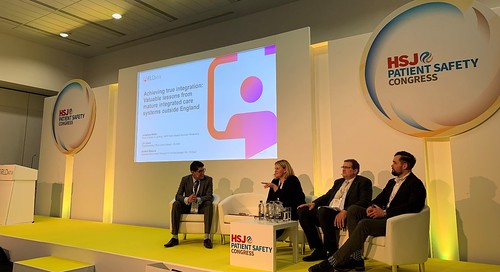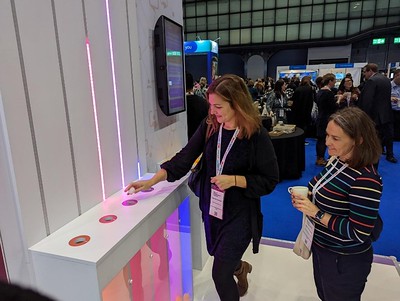Achieving True Integration: Lessons from Mature Integrated Care Systems
Reflections from the RLDatix panel session at Patient Safety Congress
Amongst the sessions at the HSJ Patient Safety Congress, RLDatix convened a panel of experts to highlight learnings from outside England that could help integrated care systems overcome the workforce challenges they face while maintaining a focus on patient safety, but what did we learn?
The panel featured Jonathan Webb (Head of Safety and Learning at NHS Wales Shared Services Partnership), Liz Jones (Chief Marketing Officer International at RLDatix), Anders Nilsson (Business Development Manager and Denmark Territory Manager at RLDatix).
The starting point for the discussion was that integrated care systems have the potential to improve patient safety through collaboration and closer system working yet a critical risk factor they face is the workforce. The task for integrated care systems is therefore to ensure that every workplace is one where staff feel they can speak up and to avoid falling into the trap of thinking that culture happens by accident.
With NHS organisations reporting anywhere between 400 and 9,000 red flag incidents a month, the workforce challenge is pressing, but what can integrated care systems learn from those systems outside England?
Communication is key
Jonathan Webb described Wales as having a mature structure that thrives on collaboration between local health boards which deliver care from primary care through to tertiary (including mental health) and all aspects of care within a geographic area. He said that although progress is still being made, Wales has taken steps to ensure there is a system which supports the importance of learning from events.
Although sharing this learning between organisations has traditionally been difficult due to the size and spread of the NHS, initiatives such as the Once for Wales Concerns Management System in Wales is helping health boards and trusts learn from any events reported to them. The aim is to use one set of coding and categorisation to categorise incidents. Communication is vital to this approach and Jonathan said: “When you integrate services, communication is vital to enable people in every part of the system understand what the process is. Linking staff data with incident data is starting to provide trends, but there is more to do and more to learn.”
Jonathan also talked about better communication between services (for example imaging services and emergency ward). “If we could enhance that communication, the number of times we had to investigate incidents would be reduced,” he said.
Communication was a theme picked up by Anders, making the point that this should always include patients. Anders works with the healthcare community in Denmark and reflected that although the country has its own challenges, there is collaboration between councils and acute hospitals. There are still challenges with data sharing and understating how much communication is required, but collaboration has been the cornerstone of a shared vision for improved patient safety in Denmark.
Health & social care working together
During the audience participation section, a Deputy Medical Director of a large NHS Trust, called for integrated care systems to take the opportunity to think differently. True integration but with a focus on care closer to home and in the communities is what is needed and sometimes referred to as ‘hospitals without walls’. Responding in terms of capacity by putting in new beds just diffuses the workforce and the unintentional consequence of admissions then needs to be considered.
Final reflections from the audience pointed out that the most important thing is a closer system which includes social care. They agreed that communication is important but also emphasised the need for health and social care to work as partners.
___________________________________________________________________________
The single biggest thing to positively impact patient safety
Alongside conversations around the importance of integrated care in assuring patient safety, we also asked the healthcare community: What is the single biggest thing that will positively impact patient safety? The results clearly indicated ‘creating a psychologically safe culture and supporting strong leadership’ was the most important factor, with 56.5% of people choosing this, with a further 34.8% of participants saying safer staffing levels is the most important factor.
Creating a psychologically safe culture can help to deliver benefits including reducing the effects of staff burnout, delivering higher quality of care and increased productivity. Healthcare leaders can use their power to influence workplace culture and drive positive change from within, ultimately creating a more fulfilled workforce who are empowered to provide the safest care possible.
___________________________________________________________________________
Continuing the Conversation
At People Summit on 28-29th November Jonathan Webb, Liz Jones and Anders Nilsson continued the conversation, focusing on how integration and safer care starts with the conversations and relationships between the experts working across safety, risk and workforce.
“It’s not just about learning from incidents for patient safety, but also understanding what works for the workforce.” Jonathan Webb, Head of Safety & Learning, NHS Wales Shared Services Partnership
“Patient safety is workforce safety.” Liz Jones, Chief Marketing Officer (International), RLDatix
If you’d like to continue this conversation, get in touch with us.

